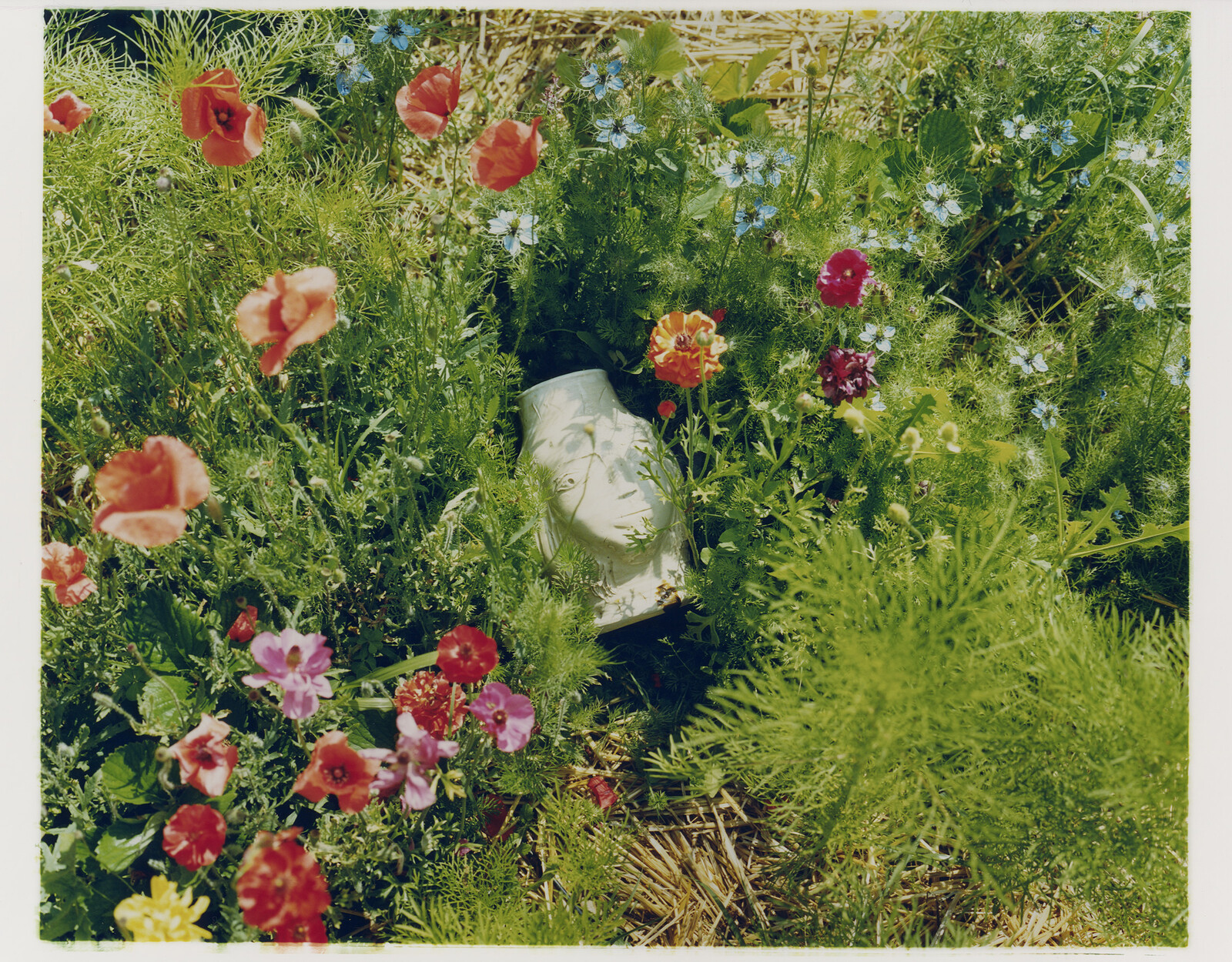May 1–June 9, 2025
Katharinenstraße 23
D-26121 Oldenburg
Germany
Hours: Tuesday–Friday 2–6pm,
Saturday–Sunday 11am–6pm
T +49 441 2353208
info@hausmedienkunst.de
Participating artists: Orla Barry, Kim Beom, Kasper Bosmans, Jeamin Cha, Mitsutoshi Hanaga, Tamás Kaszás, Krisztián Kristóf and The Randomroutines, Eustachy Kossakowski, Sharon Lockhart, Deirdre O’Mahony, Peter Nadin & Natsuko Uchino & Aimée Toledano, Rory Pilgrim, Iza Tarasewicz and Jennifer Walshe.
The Oldenburg Gleaners Society Club is an exhibition and assembly of people and things, departing from the idea and practice of “gleaning.” The term traditionally refers to collecting surplus crops following a harvest and redistributing them to people in need. This act—common from biblical times up until the 1700s—was a strategy of survival and resourcefulness, essential to those marginalized by the emerging forces of capitalism: widows and orphans, the poor and expropriated, newcomers and exiles. The Oldenburg Gleaners Society Club, curated by Sebastian Cichocki, is a spinoff of his The Gleaners Society, presented at the 40th EVA International—Ireland’s Biennial of Contemporary Art. The exhibitions position gleaning alternately as an artistic subject, a metaphor, and a curatorial methodology. Most of the works in the Oldenburg exhibition were “gleaned” locally, using found materials and objects, while others were transferred as digital files. The exhibition, rather than involving traditional physical shipping, prioritizes protocol-based works related to agricultural processes.
Artistic practices informed by degrowth philosophies—focused on sustainability and adaptation, and which do not always produce tangible works of art—often take root in other fields, such as political activism, radical pedagogy, and experimental farming. Inspired by the work of Irish visual artist and shepherd Orla Barry, the exhibition in Oldenburg moves fluidly between the farm and the gallery, searching for “post-pastoral” artistic practices. Barry exhibits a mountain of sheep’s wool that went unsold because the purchase price was too low, echoing the language of arte povera. Natsuko Uchino uses objects and materials found in Oldenburg, drawing on agricultural and craft histories and the circulation of knowledge and goods. Deirdre O’Mahony presents a musical video work emerging from feasts, which generated discussions between farmers, scientists, and politicians. Kasper Bosmans’s two instruction-based wall paintings (one produced outside the gallery, by students at Neues Gymnasium Oldenburg) relate to agrarian lifecycles and the migration of European wolves. . Mitsutoshi Hanaga documents the pilgrimage of Jusatsu Kito Sodan, “the monks bringing the curse of death,” a radical ecological and anti-capitalist manifestation in the 1970s Japan. Rory Pilgrim reflects on the idea of a “raft”—the simplest yet most fragile survival vehicle on open water—to consider what supports us and keeps us afloat in this time of climate emergency. The film by Peter Nadin, Natsuko Uchino, and Aimée Toledano is a record of farm work while meditating on the artist’s social role and the need to go beyond stubborn art/non-art divisions. Kim Beom records several instructors taking turns to explain to a piece of granite the poetry of Jung Ji-yong, a Korean modernist poet. Tamás Kaszás, Krisztián Kristóf, and the Randomroutines’ work (gleaned from their recent exhibition in Oldenburg) is a garden sculpture, referencing their interest in folk science, shortage economy, and the concept of “usefulness.” Eustachy Kossakowski photographs a mythologized escapade undertaken by curators and critics in the 1960s Polish countryside, where they collected scarecrows to exhibit in the gallery space. Jeamin Cha films decaying fruits in vitrines, interspersed with correspondence related to kusōzu, Buddhist paintings that depict the nine stages of a decaying corpse. Iza Tarasewicz’s work, inspired by the artist’s agricultural background, brings forward the figure of the devil, set between folk tradition, protest, populism, farm labor, dance, and collectivity in rural communities. In Sharon Lockhart’s film, inspired by Japanese ikebana flower arranging, a farmers rearrange materials on their farm. Finally, the exhibition is amplified by a performance from composer Jennifer Walshe, the author of Aisteach, a fictional history of the musical avant-garde in Ireland spanning 187 years.
On February 24, 2025, Oldenburg City Council voted to rename the Edith-Russ-Haus für Medienkunst to Haus für Medienkunst Oldenburg. The renaming came after a year of tensions, public discussions, and debate in the local community following new research completed by local historians into the troubling past of the institution’s namesake (for details, see on the website).
The Haus’s team expresses our gratitude to all who have supported us in this difficult process: our colleagues at the City, active members of our art audience, local politicians, and many other allies. We would like to close this journey and the year of 2025 with a special project that aims to tackle this history. A group exhibition with extensive local collaboration will place Edith Russ—for the last time—at the center of attention. The exhibition intends to address and raise questions around Russ’s story as a journalist and later as an art collector in relation to National Socialism and its aftermaths, including local entanglements in Oldenburg.

